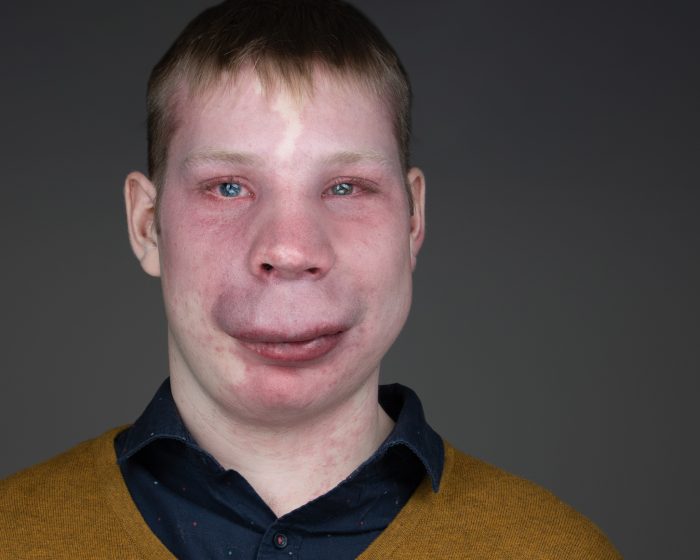Defining Differences
More than two million people in Canada are living with a facial difference. A person with a facial difference refers to anyone whose appearance, from the neck or above, has been affected by a congenital (from birth), acquired (after birth), or episodic (comes and goes) condition or syndrome.
Below we have provided a list of facial differences. Please note, this list is not exhaustive, is not formal medical advice and should not be used for diagnosis or treatment purposes. The list is searchable by categories; some conditions may appear in more than one category.
Caused by the varicella-zoster virus (VZV), Ramsay Hunt Syndrome is a neurological disorder that results in facial palsy, a rash that affects the ear and/or mouth, and may also cause tinnitus and/or hearing loss.
Vitiligo is a long-term skin condition characterized by patches of the skin losing their colour (pigment).
Varicose veins are veins that have become enlarged and twisted. The term commonly refers to the veins on the leg, although varicose veins can occur elsewhere.
Toxic Epidermal Necrolysis
Toxic epidermal necrolysis (TEN) is a potentially life-threatening dermatologic disorder characterized by widespread erythema, necrosis, and bullous detachment of the epidermis and mucous membranes, resulting in exfoliation and possible sepsis and/or death.
Tourette syndrome is a neurodevelopmental or brain-based condition that causes people who have it to make involuntary sounds and movements called tics.
Plagiocephaly is a condition characterized by the flattening of one side of the skull.
Osler Weber Rendu Disease
Osler-Weber-Rendu disease is a disorder that leads to abnormal blood vessel formation in the skin, mucous membranes and often in various organs.
Nevus is a condition characterized by common skin growth, or ‘mole’, composed of special pigment-producing cells called nevomelanocytes. Nevomelanocytes are related to pigment-producing cells normally found in the skin, called melanocytes. A congenital nevus is a mole present at birth.
Multiple Sclerosis (MS) is currently classified as an autoimmune disease of the central nervous system (brain, spinal cord). The disease attacks the protective covering of the nerves (myelin), causing inflammation and often damaging the myelin.
Melasma is a common skin problem that results in brown to gray-brown patches, usually on the face. Although it can affect anyone, melasma is particularly common in women.
A Melanocytic Nevus, also known as nevocytic nevus, nevus-cell nevus and commonly as a mole, is a type of melanocytic tumor that contains nevus cells. The majority of moles appear during the first 20 years of a person’s life, with about one in every 100 babies being born with moles.
Macrocystic Lymphatic Malformation
A Macrocystic Lymphatic Malformation, also known as a Cystic Hygroma or Cystic Lymphangioma, is an abnormal growth that usually appears on a baby’s neck or head. It consists of one or more cysts and tends to grow larger over time. The disorder usually develops while the baby is still in the womb but can also appear after birth.
A Keloid, sometimes referred to as a keloid scar, is a tough heaped up scar that rises quite abruptly above the rest of the skin. It usually has a smooth top and a pink or purple color. Keloids are irregularly shaped and tend to enlarge progressively. Keloids do not regress over time.
Juvenile Xanthogranuloma (JXG) is a non-Langerhans cell histiocytosis that is usually benign and self-limiting. It occurs most often in the skin of the head, neck, and trunk but can also occur in the arms, legs, feet, and buttocks.
Impetigo is a bacterial infection that involves the superficial skin. The most common presentation is yellowish crusts on the face, arms, or legs. Less commonly there may be large blisters which affect the groin or armpits.

